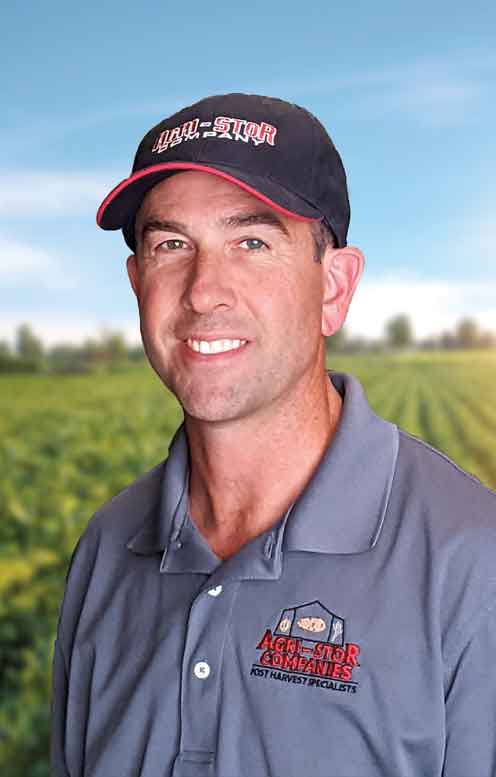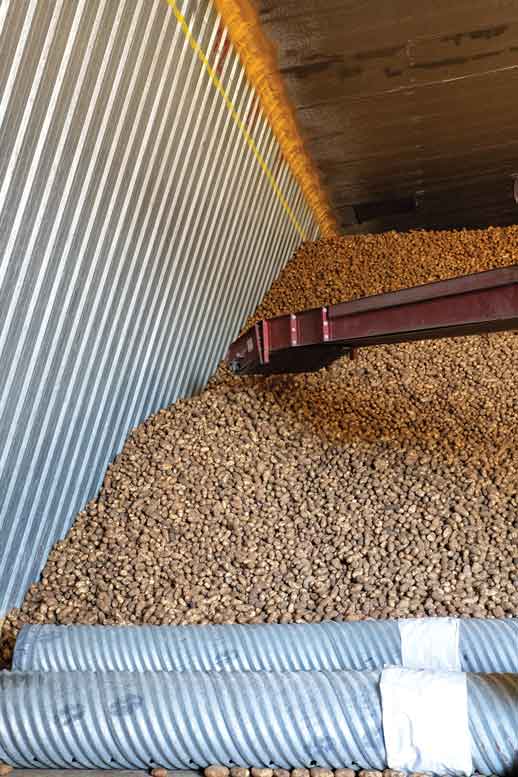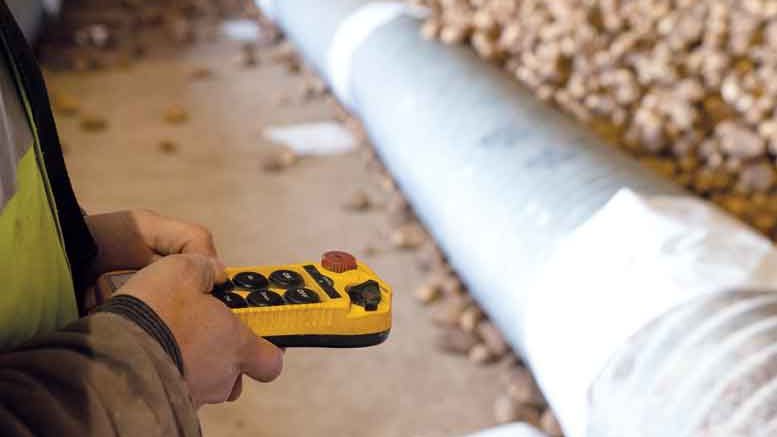|
Click to listen to this article
|
Story by Ken Young, Director of Product Quality, Agri-Stor Companies
Photos by Angie Rader

I used to coach a lot of basketball, and I can still remember one of my first timeouts in a tight game situation. Our team was losing by a couple of points. Many things were going wrong on the court, and the clock was winding down. I remember my players staring at me while I grunted incoherently and pointed at scribbles on my clipboard. My capacity to think and communicate went AWOL when my team needed me the most. I don’t remember if we won or lost that game. But I do know that my practice plans started to include a two-minute drill to rehearse the game plan for those final two minutes of a game. What are we doing? Why? What happens if…? We needed to practice thinking through the scenarios, communicating with each other and executing the game plan.
It’s a bit of a stretch to apply coaching basketball to managing potato storages, but there is a parallel. Harvest time is a bit like the end of the game: lots of moving parts to manage, quick judgement calls based on limited information, a ticking clock and high stakes. A pile of potatoes can run out the door within the first month if not managed well. There’s an entire year’s crop on the line. It’s best to have a game plan.

A typical storage season involves preparing the building and ventilation system. Along with equipment checks and repairs, a thorough cleaning followed by a disinfecting treatment is a must. Cleaning and removing all organic material and foreign material prior to disinfecting maximizes the efficacy of the treatment. Maintenance should be done prior to harvest. Making sure the system is working is just the beginning.
Measuring air speeds in ducts and transition areas and calculating the CFM produced by the fans is critical for making adjustments during storage. You should know how much CFM the ventilation system can deliver. Recommendations such as 20 CFM/ton of potatoes are just a reference, and ideally, the storage manager can adjust fan speeds to higher and lower rates while maintaining balanced airflow in each duct. Additional pre-season preparation includes:
- Checking the operation of all electrical, mechanical, humidification and cooling components.
- Knowing what to expect in terms of normal run times with/without refrigeration during normal harvest temperatures. Heat and carbon dioxide become problems during standby hours.
- Knowing the humidification capacity – above 95 percent relative humidity even when fresh-air doors are wide open.
- Checking sensors and calibrating if needed (temperature, humidity and carbon dioxide).
There are some aspects to storing potatoes that are predictable each year. The storage game plan should attempt to specify:
- Fan speed settings for removing field heat as potatoes are being loaded into the storage.
- The target relative humidity range – the acceptable amount of free water.
- The targeted date to reach holding temperature and ideal cooling ramp rate (degrees per day).
- Initial disinfection treatment date range to neutralize incoming soil pathogens and prevent disease outbreaks.
- An approximate date for sprout inhibitor application.
Some events are not predictable, but common enough to prepare for. For example, excessive heat or extreme weather conditions during harvest and storage loading can be challenging. Cold potatoes going into a warm storage is problematic, but can be handled by allowing the cold potatoes to gradually come to storage temperature before providing ventilation to those ducts. Identifying pink rot coming out of the field means that a decision has to be made quickly: treat the problem while loading the storage or risk waiting until the storage is filled. In addition to disinfectant applications, fan speeds, humidity settings and initial temperature settings can all be used to combat high rates of breakdown and disease. Later in the storage season, issues can include early dormancy break, ceiling condensation and dripping, inverted pile temperatures, hot spots and fry-color darkening.

It’s important to note that each solution to a given storage problem usually has a less desirable tradeoff. Thinking through choices ahead of time can make it easier to think clearly when faced with a particular dilemma. In a high breakdown situation, the solution is often to increase fan speeds and decrease humidity to less than 90 percent to dry up the rot and slow bacterial spread. The tradeoff is an increase in moisture loss (shrink) from the entire pile as even the healthy potatoes have to deal with the difference in vapor pressure. Similar tradeoffs that can occur are:
- High air volumes which help remove pile heat, but become counterproductive at excessive speeds as refrigeration and evaporative media efficiencies both drop. Excessive air speed through ducts also strips moisture from the air, leading to shrink and pressure bruise.
- Holding potatoes at higher temperatures for longer periods can “burn off” sugars to improve process quality, but also incubates disease-causing pathogens.
The best storage manager with the perfect storage building, ventilation system and crop protection program still has only a limited number of tools for maintaining a quality potato pile – those being air flow, temperature, humidity, and a suite of disinfectant treatment options and sprout-inhibiting applications. One could argue that the automating ability of the latest generation of control panels represents an additional tool that wasn’t available in years past. Nonetheless, the surest way to a successful storage season is to anticipate the challenges rather than react to situations. Create your game plan. Help minimize breakdown and storage losses with planning and preparation. You can have a winning storage season this year.

